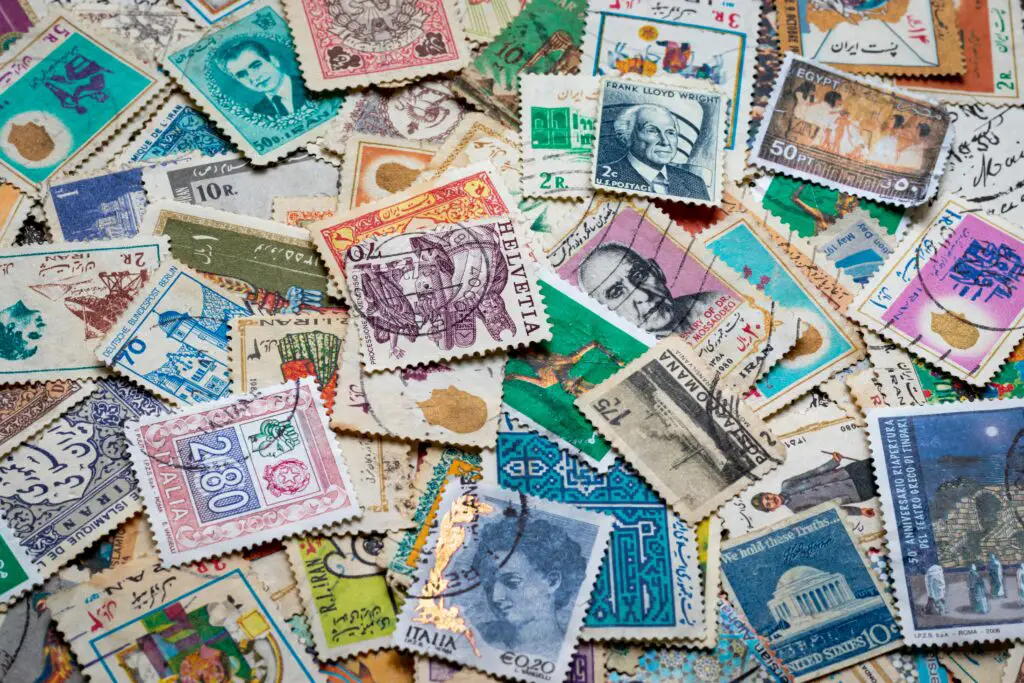Stamps are small pieces of paper used for postage, typically featuring a printed design or illustration. They are affixed to letters or packages as evidence that the appropriate postage has been paid. Stamps are used by postal services around the world as a means of generating revenue and providing a standardized system for the delivery of mail. Stamps can also be collected as a hobby, with many people seeking out rare or unusual stamps to add to their collections. Stamp collecting, or philately, has been a popular pastime for over a century and has inspired many to learn about history, geography, and culture through the study of stamps from different countries and time periods. Let us see what are non-machinable stamps.

What are non-machinable stamps?
Non-machinable stamps refer to postage stamps that are used to mail letters or packages that cannot be processed by automated sorting machines. Non-machinable items are those that do not meet the requirements for machinable mail, which is mail that can be processed by automated sorting equipment.
Examples of non-machinable mail items include envelopes or packages that are:
- Too large or too small
- Too rigid or too uneven
- Have clasps, strings, buttons, or other non-paper closures
- Have a thickness greater than ¼ inch
- Have a shape other than rectangular
- Are lumpy or have protrusions
When sending non-machinable items, the sender needs to affix non-machinable postage stamps to the envelope or package to cover the additional processing costs. These stamps are usually more expensive than regular postage stamps.
Benefits of non-machinable stamps over old ones?
Non-machinable stamps offer several benefits over old stamps, especially for mail that cannot be processed by automated mail processing machines. Some of the benefits of non-machinable stamps include:
- Convenience: Non-machinable stamps make it easy to send items that cannot be processed by machines. Instead of having to go through the hassle of manually adding additional postage, you can simply affix a non-machinable stamp to your item and be confident that it will be delivered properly.
- Cost savings: Using non-machinable stamps can help you save money in the long run by ensuring that your items are properly processed and delivered. This can help you avoid the cost of additional postage, re-sending items, or having to pay for return postage if your item is not delivered.
- Improved delivery times: By using non-machinable stamps, you can ensure that your item is processed and delivered quickly. Non-machinable items are often processed manually, which can help to speed up delivery times and reduce the risk of delays.
- Enhanced security: Non-machinable stamps can help to enhance the security of your mail by ensuring that it is properly processed and delivered to the intended recipient. This can help to reduce the risk of lost or stolen mail.
Overall, non-machinable stamps provide a more efficient and reliable way to send items that cannot be processed by automated mail processing machines and can help you save time, money, and hassle in the long run.
Disadvantages of using non-machinable stamps
There are a few disadvantages of using non machinable stamps, including:
- Additional cost: Non machinable stamps require additional postage to cover the extra handling and processing required. This means that you may end up paying more for postage than you would for regular mail.
- Limited availability: Non-machinable stamps are not always available at every post office or through all channels. This can make it difficult to obtain them when you need them.
- Possible delays: Non-machinable mail may take longer to process than regular mail. This is because it requires special handling and may need to be sorted manually.
- Increased risk of damage: non-machinable mail may be more likely to get damaged during processing. This is because it cannot be processed through automated machines, which can result in it being handled more roughly by postal workers.
- Complexity: The rules and regulations surrounding non-machinable mail can be complicated and difficult to understand. This can make it challenging to ensure that you are using the correct postage and that your mail is being handled properly.
Ques-1: How do I affix non-machinable stamps to my mail?
Ans: Non-machinable stamps should be affixed to the upper right corner of your mail item, just like regular stamps. If additional postage is required, it can be added to the top left corner of the item.
Ques-2: How much extra postage is required for non-machinable mail?
Ans: The amount of extra postage required for non-machinable mail varies depending on the weight and size of the item. You can consult with your local post office to determine the exact amount of postage required.
Conclusion:
In conclusion, non-machinable stamps are an essential tool for sending mail items that cannot be processed by automated machines. These stamps help ensure that the items are handled manually and delivered to their intended recipients without damage or delay. Non-machinable stamps are typically required for irregularly shaped items, such as greeting cards, small packages, and items with protruding or uneven surfaces. It is important to check with your local postal service to determine if your mail item requires a non-machinable stamp and to ensure that the correct postage is applied to avoid any delays or return to sender. Using non-machinable stamps is an easy and convenient way to ensure your mail is delivered safely and on time.
Frequently Asked Questions:
- Can I use non-machinable stamps for regular mail?
Ans: Yes, you can use non-machinable stamps for regular mail. However, they may not be necessary for items that can be processed by automated mail processing machines.
- What types of mail are considered non-machinable?
Ans: Examples of non-machinable mail include square or rigid envelopes, envelopes that are too thick, envelopes with clasps, and envelopes with unevenly distributed contents.


